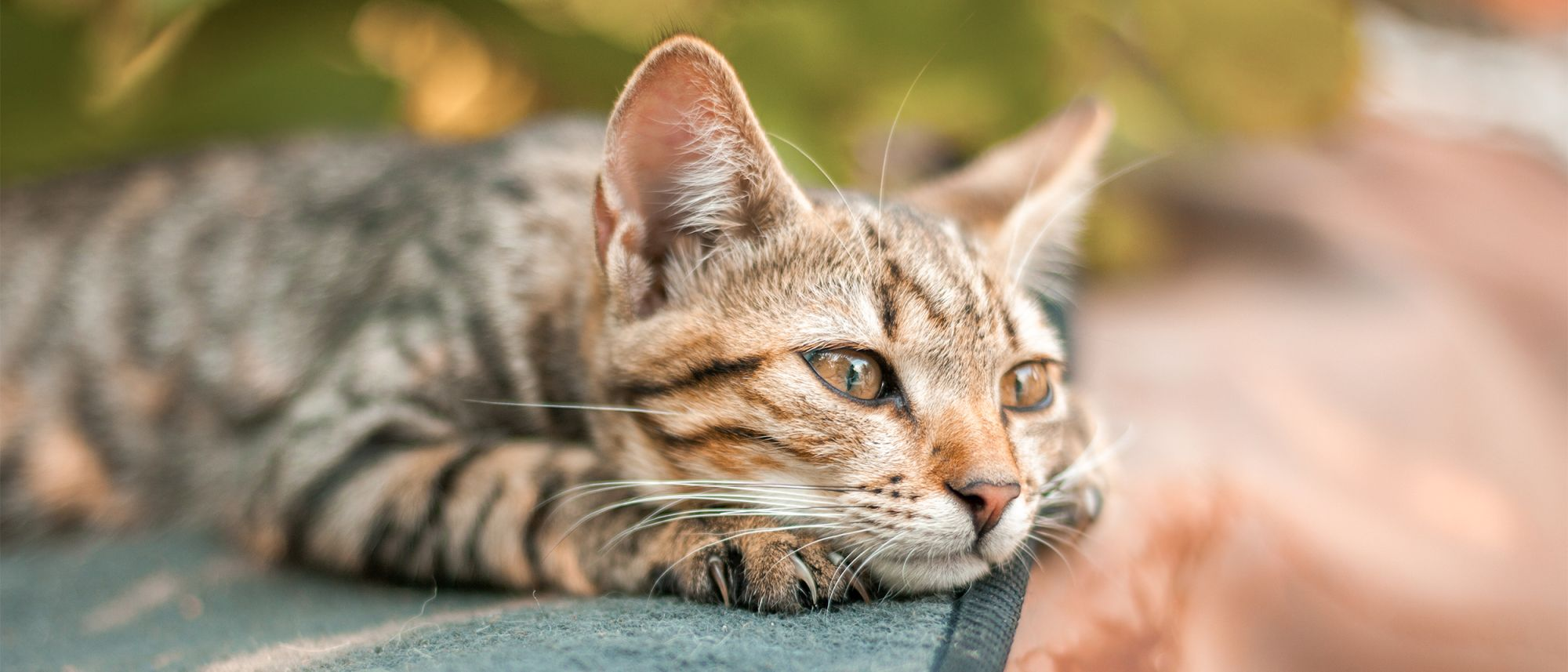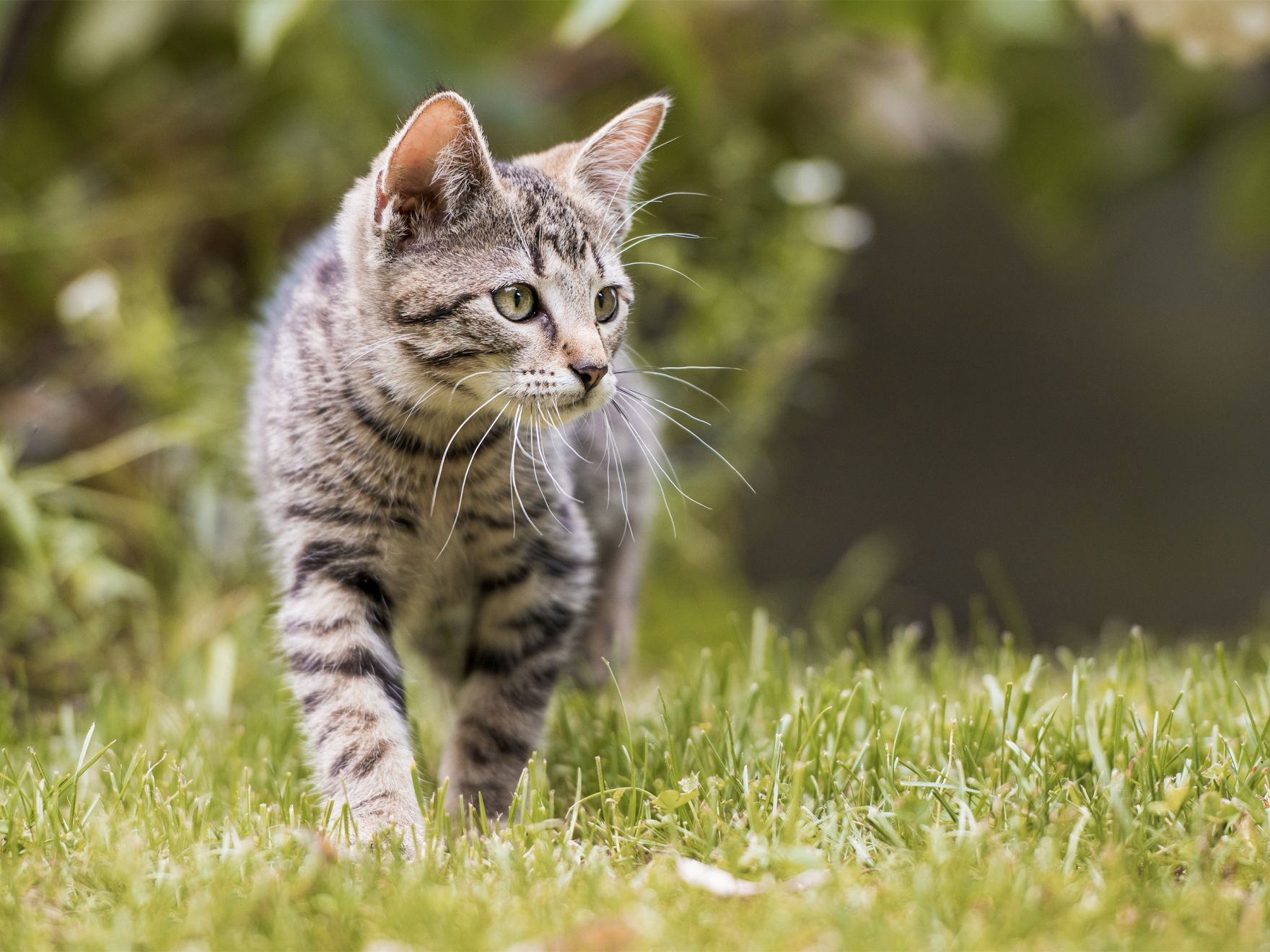Urinary tract infection (UTI) in cats
Article

A Urinary Tract Infection (UTI) is one of many urinary health related problems that can affect a cat. If a cat has a UTI there could also be other underlying health problems, so a visit to the veterinarian is required to get a full diagnosis.
What is a cat UTI?
A urinary tract infection occurs when bacteria is present in the urethra and finds a way into the bladder. As a result, the bacteria can develop into a UTI.
Urinary tract infections in cats can be categorized under Feline Lower Urinary Tract Disease (FLUTD), which is the general term encompassing all the various causes of bladder problems affecting cats.
Feline lower urinary tract disease can affect any cat and encompasses a wide range of bladder problems, such as:
- Idiopathic Cystitis - This is the term given to unidentifiable issues that cause inflammation of the bladder. Idiopathic Cystitis is also known as Feline Idiopathic Cystitis (FIC). This disorder may be triggered by stress in susceptible cats.
- Urolithiasis - Urolithiasis in cats occurs when urine crystals aggregate to form stones in the bladder or the urinary tract.
- Urethral plugs - Occur when an accumulation of debris (cells, proteins, crystals) form a plug that blocks the urethra.
- Behavioral disorders - Changes to day-to-day activity and behavior, such as your cat urinating everywhere or more frequently, could be a sign of a bladder problem.
- Neoplasia - This is the term used to describe tumors, or cancer, which can affect the bladder and other parts of the urinary tract.
How does a cat get a UTI?
Cats evolved from desert-dwelling animals that survived on very low amounts of water, so they had to significantly concentrate their urine. These days, domesticated cats have maintained their low thirst drive and continue to produce highly concentrated urine. As a result, this can have an impact on their lower urinary tract health.
The risk of urinary health issues increases for cats that are spayed or neutered, dehydrated or living a sedentary lifestyle. Certain breeds and cats with genetic predispositions may also be more susceptible.
UTI in cats is less common than other causes of feline lower urinary tract disease (FLUTD). Cat UTI is more common in cats who are elderly, or who have other health conditions like diabetes or kidney disease that predispose them to infection.
Signs of a UTI and other bladder problems in cats
Generally, signs of a UTI and other bladder problems can vary between cats and are often quite subtle. Cats are masters of hiding pain, but cats suffering from a bladder problem will likely indicate some form of discomfort.
Common signs of a UTI and other bladder problems include:
- Difficulty or straining to pass urine - If your cat strains or shows signs of pain, such as meowing while urinating, this could be a sign of a bladder problem.
- Passing small volumes of urine - Your cat urinating more often and/or passing less urine every time they go could indicate a problem.
- Urinating in inappropriate locations - Inappropriate urination, also called “periuria”, could be a symptom of cat incontinence and bladder problems.
- Passing urine that looks like blood - If you notice pinkish urine indicative of the presence of blood you should contact your vet immediately.
- Crouching longer - If your cat is spending longer peeing than usual this could be a sign of obstruction.
- Behavioral changes - Behavior changes may include a loss of appetite or showing increased signs of pain or irritability, particularly when urinating.
- Excessive grooming - Some cats suffering from a bladder problem will also over-groom their belly and inner thighs.
- Straining unproductively - If your cat can’t urinate despite straining, it could be a sign of an obstruction or a urethral plug.
How do I know if my cat has a UTI?
Is your cat straining to pee? Have you noticed blood in their urine? Are you asking yourself, "why is my cat peeing everywhere"? These are all signs your cat needs immediate veterinary attention.
Your vet will likely examine your cat and obtain diagnostics to help determine what is causing the potential bladder problem. These tests may include a urine sample, x-ray and/or ultrasound images of your cat’s bladder.
Tests may also be carried out to identify blood in urine. Since blood in your cat's urine is not always easy to see, sometimes your vet will send home granules, such as Hematuria Detection Technology by Blucare, that can be mixed into the litter to help identify when blood is present.

How will a vet treat your cat’s bladder problem?
The course of treatment for FLUTD depends on the underlying issue. Since FLUTD encompasses a variety of illnesses grouped under the same name, you and your vet will first work together to diagnose the problem.
Where possible, your vet will recommend management options aimed at getting rid of the cat's bladder problem. This may include antibiotics, diet changes, additional hydration, or surgery.
Sometimes behavioral medications will also be prescribed if stress or anxiety is thought to be a component of the bladder problem.
Home remedies for a cat UTI and the risks
There are proactive measures you can take from home to support your cat's urinary and bladder health. However, before carrying out any measures a veterinary professional should first be consulted.
By consulting with a vet, you can be sure you’re pursuing the correct course of action for your cat.
Supporting your cat's recovery
Most cases of feline lower urinary tract diseases can be managed with the help of a veterinarian. But, to ensure the best possible treatment outcome, it is essential to determine the underlying cause of FLUTD. This underlines how important it is to see a vet as soon as any unusual signs occur.
After an initial consultation, a vet may advise some lifestyle changes to help manage urinary health. Overweight cats are sometimes at a higher risk of developing FLUTD, as is any cat that drinks or urinates less frequently. If your cat is overweight, a vet may suggest a weight loss program and increasing the amount of physical activity.
Supporting your cat's urinary health through diet
A cat's diet can play an effective role in supporting urinary health. Tailored urinary diets can support a healthy urine pH (the acidity of their urine) and limit the number of minerals that have the potential to crystallize and cause stones.
Wet foods can be useful for some cats thanks to their high percentage of water content. This can help encourage cats to urinate more often and flush out crystals, debris, or bacteria.
Learn how you can help encourage a cat to drink more water and stay hydrated here.
Related Articles
Like & share this page